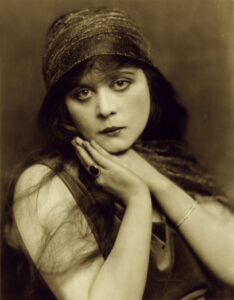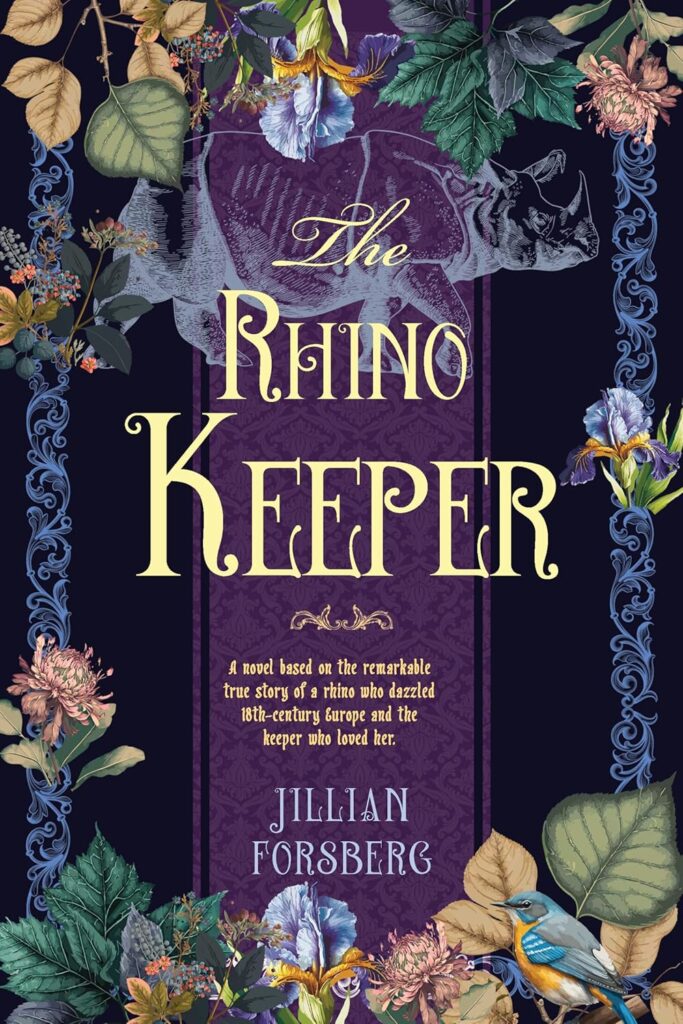History & Film: Theda Bara and the Rise of the Vamp
WRITTEN BY TRISH MACENULTY
 “The vampire I play is the vengeance of my sex upon its exploiters. I have the face of a vampire, but the heart of a feminist.” —Theda Bara
“The vampire I play is the vengeance of my sex upon its exploiters. I have the face of a vampire, but the heart of a feminist.” —Theda Bara
In spite of the fact that she was an international sensation during the silent film era and starred in more than forty films, Theda Bara (unlike Charlie Chaplin or Mary Pickford) is not well known. There’s a reason for her relative obscurity: most of the films in which she appeared burned in a fire in 1937. Only four films survive along with a few clips and photographic stills from others. Bara’s heyday only lasted a few years (1915 – 1920). In that short time her portrayal of a vamp (from the word “vampire”) — a confident and cunning woman who uses men for her own purposes — became notorious around the world.
Another reason modern film fans may know little to nothing about Theda Bara could be that, for all the scandal and titillation surrounding her vamp persona, the actress herself is not a tragic figure. When her stellar career faded, she set up house in Hollywood with her director husband, Charles Brabin, and became popular as a hostess, where at parties she sometimes made fun of her vamp image.
Of greater interest to me than her obscurity is her meteoric rise to stardom. As her biographer Eve Golden writes, “Theda Bara was the first film star to rise overnight from anonymity into superstardom. In the fall of 1914, she was an unknown actress. Four months later she was the world’s most famous star. She was also the most reviled, which in itself added to her fame.”
The seeds of her success can be attributed to a myth created by the public relations team at Fox Studios, which involved an encounter in the Egyptian desert between an Italian artist and a French actress, whose passionate union resulted in the birth of the future actress. According to this legend, Bara had a brilliant stage career in Paris before making her film debut in 1915. (An earlier film in 1914 is conveniently ignored in the myth.) The public ate it up.
Theda Bara was not her real name, of course. Born Theodosia Burr Goodman (she was named after Aaron Burr’s daughter), she was a “nice Jewish girl” — as she liked to tell people later — from a prosperous family in Cincinnati. And her stage career was anything but brilliant.
So, what qualities did Bara possess that transformed her from a third-rate stage actress into a mega-star of the screen? Like many a young girl with a dramatic bent, Bara dragooned siblings and neighborhood children into her homespun productions, but what may have had a more significant influence on her future was her mother’s successful business as a wig maker. The role model of a respected, successful woman was augmented by an impressive clientele.
In the late 19th century, when Bara was growing up, Cincinnati had a thriving theatrical scene, including road shows from New York. High-class Vaudeville acts as well as famous performers such as Eleanora Duse and Sarah Bernhardt made appearances in venues such as the Music Hall, the Grand Opera House and the Lyric. And the services of wig-maker Pauline Goodman were in demand. The presence of these women who were successful in their own right in her mother’s salon most likely fueled the dreams of stage success in the young girl.
Another consideration is the fact that Cincinnati was home to a strong and vibrant Jewish immigrant community, which most likely fostered an ethic of hard work and determination. Bara was always proud of her Jewish roots.
One mystery is how a woman who, by all accounts, was kind and warm-hearted in real life managed to portray such a cold and calculating villain? Part of the answer lies in her acting abilities, her costumes, and her make up — those kohl-rimmed eyes! — but there may be a personal inspiration as well. Bara reputedly had her heart broken by an artist in Paris (a relative of Isadora Duncan). When she returned from Europe, she threw herself into her work, perhaps in an effort to forget her personal and professional failures. Her iron will to succeed may have been what Frank Powell saw when he cast her in a small role as a nun in the film, The Stain.
Powell insisted that she, rather than a known star, play the “vampire” in his next film for William Fox. Powell’s instincts were right. Bara had the strength of character to portray a self-assured, ruthless woman — the precursor to the femme fatale that Barbara Stanwyck and Lana Turner would later play in noir films. Even Vivien Leigh’s Scarlett O’Hara with her reckless insouciance owes something to the vamp. Although the words “vamp” and “vampire” were used interchangably, these were women who sucked the life force out of men, not their blood.
Another factor in Bara’s rise to fame has to do with timing. In the early silent films, women often played virginal and saintly characters in need of saving by a manly hero. It’s noteworthy that 1914 saw the rise of The Perils of Pauline and The Exploits of Elaine — two series featuring hapless heroines who epitomized the “damsel in distress.” The vamp, on the other hand, has no need or desire for a male savior. In fact, she devours those who attempt to rescue her.
The vamp’s assertion of power over a man must have been eye opening in an era when women across the country were fighting an uphill battle for the right to vote, discouraged from meaningful careers, and sometimes trapped in oppressive marriages where they had no rights at all. A devious woman who uses her sexuality to get ahead may not seem like the ideal feminist icon, and yet women at the time must have thrilled to see a powerful woman who was not the mere pawn or plaything of men, but who lived her life on her own terms. The vamp was just such a woman. Though there were earlier depictions of this female vampire in paintings, poems, and plays, Theda Bara’s savage performance in the film A Fool There Was established the vamp in the public consciousness at a new level.
To understand the impact of the vamp on the public psyche, it is instructive to take a closer look at Bara’s debut, which can be seen on YouTube in its entirety.
The film opens with a poem by Rudyard Kipling on the title cards. One line in particular captures the essence of the vamp: “We called her the woman who did not care.” In a world where women were expected to constantly care for others, to care for their reputations, and to care about the opinions of men, here was a revelation. A woman who did not care!
After the poem, the film opens with a full shot of Bara against a plain backdrop, looking around. Her eyes light upon a vase of roses. Taking one of the flowers, she holds it to her nose and smiles as if enjoying the aroma. With her smile frozen in place, she rips the petals off the stem and crushes them. Her smile grows as she looks from the crushed petals in her hand back to the demolished stem. At this moment, we understand she really doesn’t care.
After this strange and unsettling prologue, the plot is set into motion with a long shot of a society woman and her little girl, both dressed all in white. They are the “angels” of the house, smiling and happy. Once the “good girls” are established, we cut to Bara and her victim/companion.
Unlike the angels, the vamp does not smile. Her costume consists of a dark (probably black) blouse with long sleeves and a high neck and a skirt of dark and light stripes. Scowling with her fists clenched, she conveys her annoyance with her silly, drunken companion. At this point, it is not her beauty (such as it is) that is alluring so much as her strength. She is imperious.
In the credits, Bara’s character has no name. She is simply called “The Vampire,” and her companion is listed as “One of her Victims.” He also needs no name. He represents all the men who have been ruined by this wanton woman.
When we first see them, the vamp and her victim are in trouble with the hotel management. After a brief confrontation, Bara jerks her companion away. Obviously she’s the one in control. In the next scene, she wears a white flower affixed to her dark bosom. She spies the angelic mother and daughter and desperately wants to make a good impression, patting the flower as if to signify her own purity.
When the little girl finds another flower at Bara’s feet and hands it to her mother, the society woman grimaces and tosses the flower away without acknowledging the vamp’s existence. The white flower on her bosom cannot diminish the effect of the dark lips, the kohl-rimmed eyes and the dark outfit. The mother knows an unsavory woman when she sees one.
The aggrieved look on the vamp’s face at this snub, followed by the title card “Someday you will regret that” foreshadows the tragedy to come. The vamp will destroy the society woman by seducing and then ruining her husband.
In another early scene, we find the vampire in her lair, her long hair down, her face deathly white, wearing a filmy white negligee. The strap of her gown constantly slips off her shoulder, emphasizing her sexuality. Here is the foundation of her power: the appearance of feminine vulnerability juxtaposed against the malevolent glee on her face when she’s crushed her victim just as she crushed the rose petals.
Suffice to say, the husband doesn’t stand a chance when the vamp sets her sights on him. But the plot is almost beside the point. The raw power the vamp holds over men in an oppressive patriarchal society is reminiscent of the power that women such as Salome and Cleopatra (both roles that Bara later played to great acclaim) wield. But in this movie, the vamp could be any woman. What a revelation that must have been in 1915!
The allure of the vamp archetype eventually faded, and Bara grew tired of the monotony of playing the villain. She wanted to be known as a serious actress but had only modest success in other roles. After her contract with Fox Studios lapsed, she made some half-hearted attempts to revive her career, but nothing came of it. However, her retreat into a happy domestic life could be construed as the ultimate vamp move. She had what she wanted. The vamp had healed Bara’s broken heart and given her the success and fame she craved. It was time to discard her and move on.
References:
- Golden, Eve. VAMP, The Rise and Fall of Theda Bara. Vestal Press. New York. 1996.
- Watch A Fool There Was (1915) here: https://www.youtube.com/watch?v=NHiDBo6ajoo
- 3.Here’s a useful documentary called The Woman with the Hungry Eyes (2006): https://www.youtube.com/watch?v=ZjwGsPf6GyM
- Opening quote from Genini, Ronald. Theda Bara: A Biography of the Silent Screen Vamp. McFarland & Co. 1996.
- Portrait of Theda Bara (1921), wikicommons.
About the contributor: Trish MacEnulty is the author of four novels, a short story collection, and a memoir. She is currently working on a series of historical novels. www.trishmacenulty.com
Published in Historical Novels Review | Issue 108 (May 2024)






